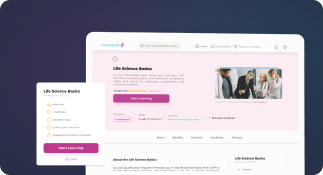Pharma Regulatory Compliance
Definition
Pharma Regulatory Compliance refers to the adherence of pharmaceutical companies to laws, regulations, guidelines, and specifications relevant to drug development, manufacturing, marketing, and distribution. It ensures that all products meet safety, efficacy, and quality standards set by regulatory authorities such as the FDA (U.S. Food and Drug Administration), EMA (European Medicines Agency), and other global bodies.
Detailed Explanation
Pharma regulatory compliance is a cornerstone of the life sciences industry. It encompasses all aspects of the product lifecycle, from preclinical research and clinical trials to manufacturing, labeling, marketing, and post-market surveillance. Ensuring compliance protects public health, maintains product integrity, and helps companies avoid costly recalls, legal action, and reputational damage.
Purpose of Regulatory Compliance in Pharma
The primary goals of regulatory compliance in the pharmaceutical industry include:
- Protecting patient safety by ensuring drug efficacy and quality.
- Maintaining consistency in production and documentation through Good Manufacturing Practice (GMP).
- Ensuring transparency and traceability throughout the supply chain.
- Facilitating global market access by meeting international regulatory requirements.
Key Areas of Regulatory Affairs Compliance
Regulatory affairs compliance spans several critical domains:
- Clinical Trials: Compliance with ICH-GCP (International Council for Harmonisation – Good Clinical Practice) standards during human studies.
- Manufacturing: Adherence to GMP guidelines to ensure consistent drug quality.
- Labeling and Packaging: Ensuring information is accurate, compliant, and localized for different markets.
- Marketing Authorization: Submitting dossiers such as the Common Technical Document (CTD) for regulatory approval.
- Pharmacovigilance: Monitoring and reporting adverse events post-market to ensure ongoing drug safety.
Global Regulatory Bodies
Pharmaceutical companies must navigate compliance across different jurisdictions. Key regulatory agencies include:
- FDA (United States): Oversees drug approval and compliance through the CDER (Center for Drug Evaluation and Research).
- EMA (European Union): Coordinates scientific evaluations and safety monitoring across EU member states.
- MHRA (UK): Regulates medicines and medical devices in the United Kingdom.
- PMDA (Japan): Performs scientific reviews and inspections for drugs and medical devices in Japan.
- WHO: Offers international guidelines that influence global regulatory practices.
Examples of Regulatory Compliance in Practice
Examples of how pharma regulatory compliance is implemented include:
- New Drug Application (NDA): In the U.S., companies must submit an NDA to the FDA demonstrating a drug’s safety and efficacy before it can be marketed.
- Periodic Safety Update Reports (PSURs): Submitted post-approval to update regulators on a product’s safety profile.
- Data Integrity Controls: Implementing ALCOA+ principles (Attributable, Legible, Contemporaneous, Original, Accurate, and more) in electronic records and documentation.
Challenges and Trends
Maintaining regulatory compliance is increasingly complex due to evolving global regulations, digital transformation, and increased scrutiny. Current trends include:
- Digital Compliance Tools: Use of AI and automation to manage regulatory documentation and submissions.
- Global Harmonization: Efforts by ICH and WHO to standardize requirements across countries.
- Remote Inspections: Regulatory bodies adopting virtual audits due to the COVID-19 pandemic.



